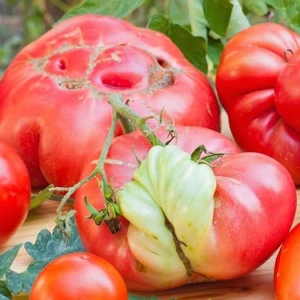We’ve posted here, a number of times in the not-too-distant past, about the enormous waste of perfectly good food that takes place every day around the world. In the EU alone, it’s estimated that 88 million tonnes of food is wasted every year. But science has found a new way to help…
 We have to stop throwing away perfectly good food!A World Bank report starkly states:
We have to stop throwing away perfectly good food!A World Bank report starkly states:
We’ll need 50 per cent more food in 35 years than we produce now, and
we’ll have 25 per cent less food by then if nothing is done.
It’s true. every year, in the EU, they waste 173 kg / 380 lb. of food for every citizen. That’s just ridiculous! And, as in other regions of the world, much of that waste happens before the food even gets to the supermarket.
Now, Dr. Kristina Liljestrand of Chalmers University of Technology in Sweden has come up with a logistics-based approach to reducing food waste in the supply chain as well as reducing the impact of that the transportation has o0n the environment.
The key is cooperation…
Liljestrand says closer cooperation between links in the food supply chain could reduce the time it takes to get food to the supermarket and the amount of handling it receives en route. And that reduces waste considerably by minimizing spoilage.
“The amount of food that is thrown away nowadays is incredible. Most food waste comes from consumers, but the amount lost in the logistics systems comes in a close second. By tweaking the logistics systems, we can ensure that the food maintains good quality and lasts as long as possible when it reaches the store.”
Issues such as packaging, crating and palleting are considered, along with transportation modes such as truck, rail, ship and inter-modal (container) services. Liljestrand’s work shows how producers processors, shippers and wholesalers can work together to determine the best way to ship each type of food and optimize the supply chain, in turn minimizing waste. No investment in new equipment or plants. No new staff to hire. No new office space or vehicles required. All they have to do is sit down around a table full of doughnuts and get coordinated.
“Several stages of the food chain are involved when it comes to waste, making it hard for a single company working alone to reduce it. Collaboration is necessary to create effective systems that span from beginning to end so that the food products reach the stores in time,” Liljestrand says. She’s developed a ‘toolkit’ to help food chain participants get together.
It’s amazing…
The amazing thing about all of this is, it costs next to nothing compared to other ways of changing food processing system. It reminds me of the guy who was hired as an efficiency expert by a major manufacturer. They asked him how to speed up the assembly line so they could turn out more widgets per shift.
He didn’t recommend rebuilding the line, adding more workers, or simplifying the product’s design. He just noticed that things were bottle-necking at one station where workers were having trouble manipulating their tools. His recommendation? Put left-handed workers on that station They would have no trouble with their tools at all, performing the operation in question. Right-handers were working cross-armed and backwards. For lefties, it was all straightforward. And the fix literally cost nothing. Win, win, win…
Now, that’s the kind of solution I like to see, for any problem!
~ Maggie J.

